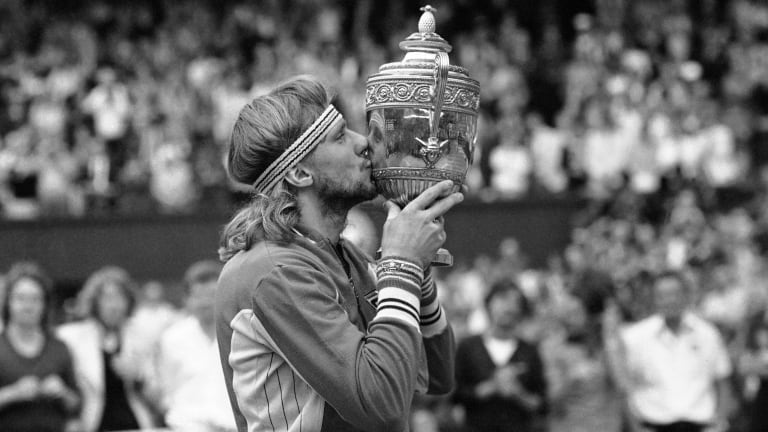Centre Court turns 100 this year. During that time, this bastion of propriety and tradition has also borne witness to a century’s worth of progress and tennis democratization. For its centennial, we look back at 10 of its most historic and sport-changing matches.
#CentreCourtCentennial
1980: The five-set final between Bjorn Borg and John McEnroe was the pinnacle of their rivalry—and the Woodstock of their tennis era
By Jun 20, 2022#CentreCourtCentennial
Serena Williams' energetic return to Centre Court after a year away from the game was a brave effort, and one worthy of her legend
By Jun 29, 2022#CentreCourtCentennial
2009: The first full match under Centre Court's roof showcased British tennis' newest Wimbledon title contender, Andy Murray
By Jun 23, 2022#CentreCourtCentennial
2008: Rafael Nadal and Roger Federer produced a quantum leap in quality and entertainment in their classic, daylong final
By Jun 22, 2022#CentreCourtCentennial
2007: After fighting for pay equity at Wimbledon, Venus Williams became the first woman to collect an equal-sized champion’s check
By Jun 21, 2022#CentreCourtCentennial
1975: In defeating a seemingly invincible Jimmy Connors, Arthur Ashe showed that with enough thought and courage, anyone in tennis can be beaten
By Jun 19, 2022#CentreCourtCentennial
1968: At the first open Wimbledon, Billie Jean King receives her first winner’s check—and notices a “big difference” with her male counterparts
By Jun 18, 2022#CentreCourtCentennial
1967: With the Wimbledon Pro event, professional tennis finally comes to the amateur game’s most hallowed lawn
By Jun 17, 2022#CentreCourtCentennial
1957: “At last! At last!” Althea Gibson fulfilled her destiny at Wimbledon, and with every win she opened up the sport a little wider
By Jun 16, 2022#CentreCourtCentennial
1937: With a World War looming and one man playing for his life, Don Budge and Baron Gottfried von Cramm stage a Davis Cup decider for the ages
By Jun 15, 20221980: The five-set final between Bjorn Borg and John McEnroe was the pinnacle of their rivalry—and the Woodstock of their tennis era
In its setting and place in time, this Wimbledon final serves as a poignant reminder of a golden era now long past, when tennis reached a peak of popularity and cultural influence it would never reach again.
Published Jun 20, 2022

© ASSOCIATED PRESS
Advertising
Advertising

This marked Borg's fifth and final crown at SW19. A year later, McEnroe would celebrate his first Wimbledon singles triumph in defeating the Swede over four sets.
© ASSOCIATED PRESS